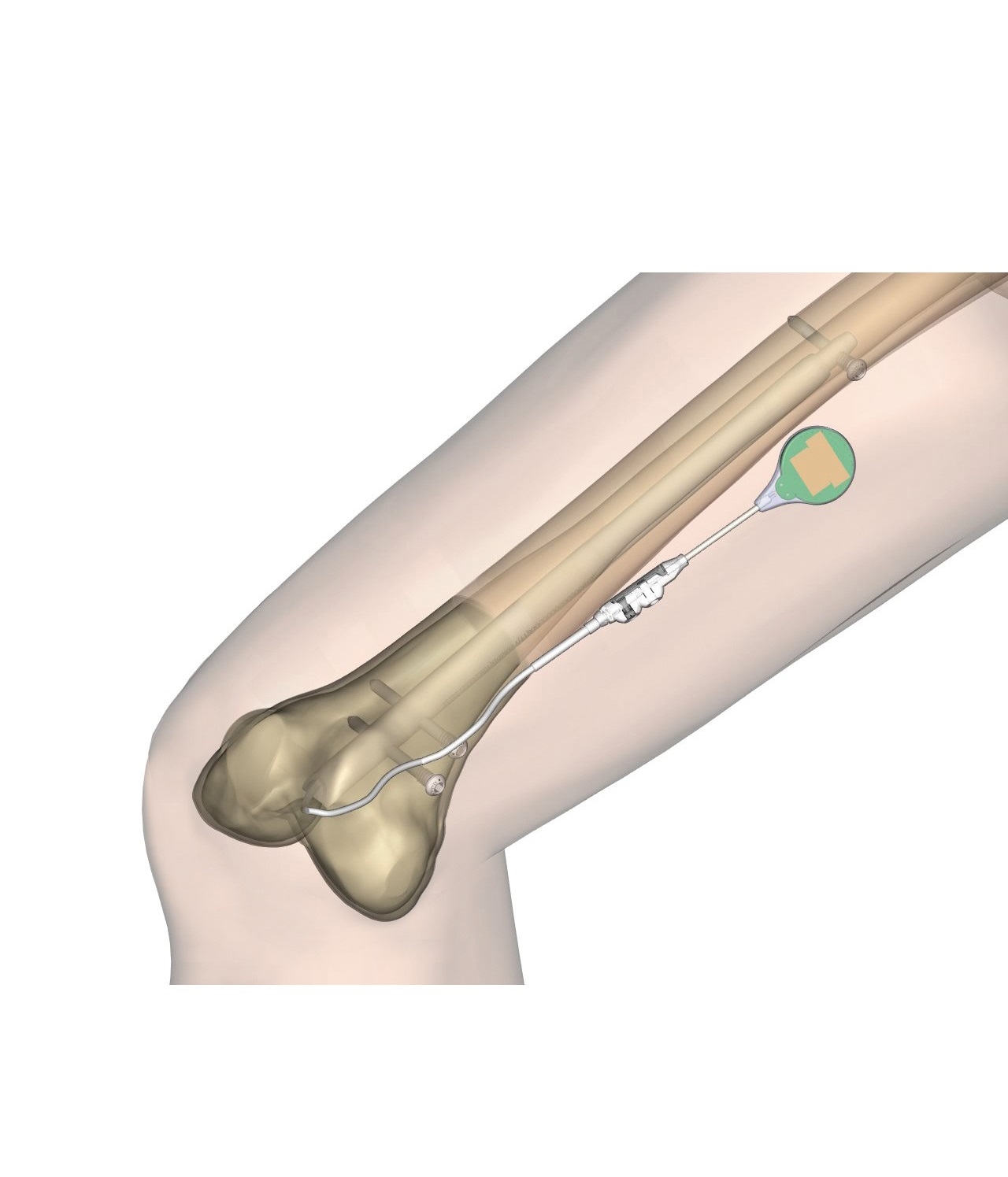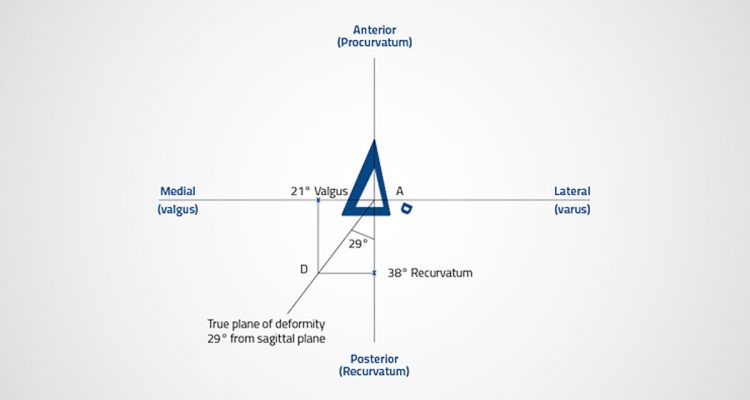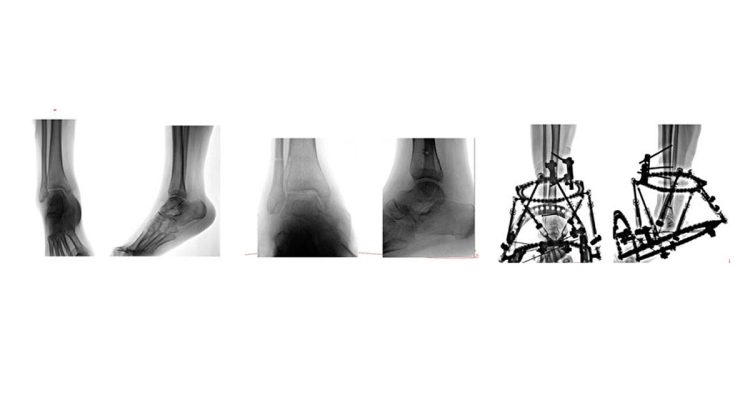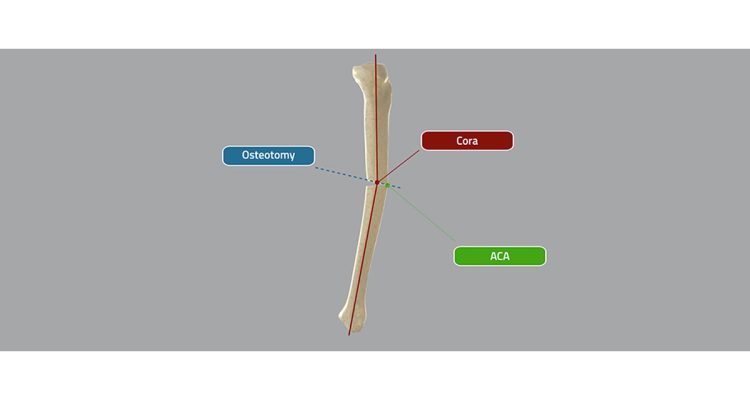Bone deformity is a three-dimensional issue, considering the three-dimensional shape of bones and joints. All basic considerations of deformity correction by using an external device should include the fundamental concepts of Anatomical and Mechanical Axis. These concepts allow a better understanding of the effects of adjustments or modifications in one plane when managing a three-dimensional problem such as bone deformity.
To understand the deformities of the lower extremity it is important to establish the parameters that define a normal alignment, usually ruled by the position of the femur, tibia, hip, knee and ankle. Each long bone has an anatomical and a mechanical axis.
The three-dimensional shape of bones and joints can be simplified to basic line drawings in frontal, sagittal or transverse anatomical planes.(1)
The anatomical axis is the line passing through the midpoint of the diaphysis. In a deformed bone every single segment will have an independent anatomical axis, and these lines intersect each other.
The mechanical axis of a bone is the straight line that connects the center points of the proximal and distal joints in the frontal or sagittal plane. It is the line of force of the axial mechanical load in static weightbearing. On anteroposterior evaluation, in the tibia the mechanical axis coincides with the anatomical axis. In the femur it goes from the center of rotation of the femoral head to the center of the knee joint. Regarding the lower limb, it extends from the center of the femoral head to the center of the ankle joint, and should normally pass through the center of the knee joint.(2)
The mechanical axis is always a straight line in either frontal or sagittal plane, but the anatomical axis line may be straight in the frontal plane but curved in the sagittal plane, as in femur.(1)
Joint orientation angles are formed because the joint lines in the frontal and sagittal planes have a typical orientation to the mechanical and anatomical axis. The medial angle formed between the mechanical axis of the femur and the mechanical axis of the tibia is called the hip-knee-ankle angle, whichrepresents the overall alignment of the lower extremity and is less than 180° in normal knees.(3) An accurate measurement of the anatomical bone deformities at a preoperative stage is clinically significant for correct decision making in surgery planning and post-operative management.
References
- Pal Singh A. 2018. Normal Alignment of Lower Limb – Axes and Orientation, from: https://boneandspine/normal-alignment-of-lower-limb/
- Cherian JJ, Kapadia BH et al. 2014. Mechanical, Anatomical, and Kinematic Axis in TKA: Concepts and Practical Applications. Curr Rev Muscoloskelet Med; 7(2):89-95.
- Tang WM, Zhu YH et al. 2000. Axial Alignment of the lower extremity in Chinese Adults. J Bone Joint Surg Am; 82-A:1603.












